Ambient Fire TV
Introduction
In 2022, Amazon announced the launch of Alexa Ambient Scenes, a new Fire TV feature that enables customers to transform the atmosphere of their room with ease. By simply expressing a mood or a season of interest, customers can surface widgets on their Fire TV that are based on their Alexa device family, locale, and engagement history. This project showcases how the Fire TV Widget uses Alexa AI to offer content-forward widgets across various ambient screens and devices. With the support of voice technology, customers can reduce the time spent searching for videos and find more personalized content.

What is the Fire TV Ambient Mode?
The Ambient Mode experience is capable of displaying full-screen background content, such as an art gallery, family photos, proactive notifications, and a default set of pinned widgets. Customers can customize their experience by changing, adding, or removing widgets. They can also enable/disable notifications. By default, the Fire TV with Ambient Home device transitions to standby mode after 5 minutes of no activity, or when the lights are turned off. It returns to Ambient mode when activity is detected again and the lights are turned back on.
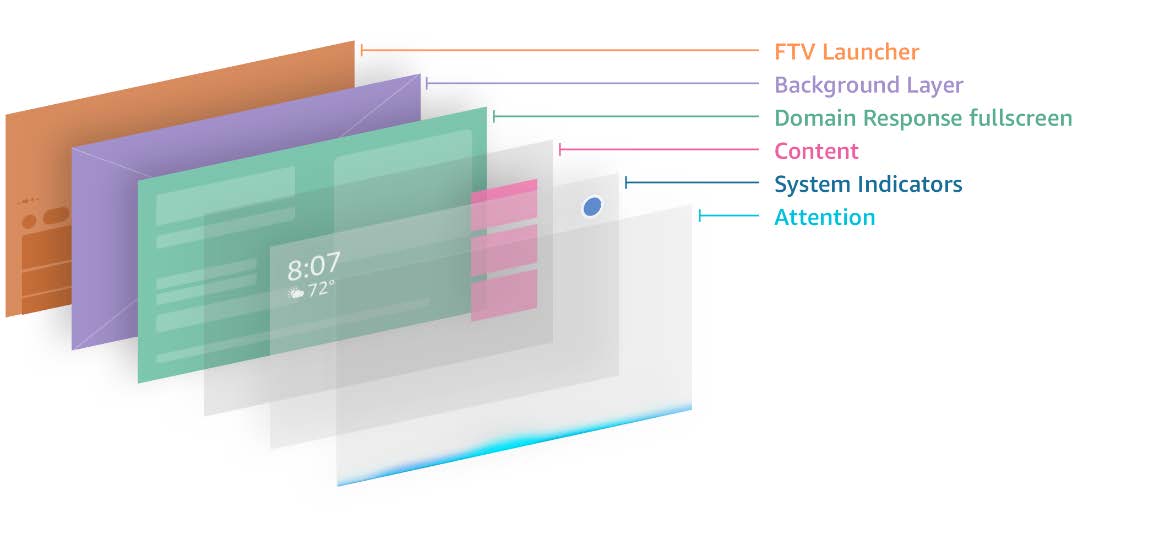
Research Findings
Mindsets | What are the motivations Fire TV customers have for engaging with content?
-
Occupy the background. Customers seek out content to have on in the background while they focus on other tasks, which can make those tasks feel less daunting and strenuous.
-
Zone out or unwind. After a long day, customers enjoy unwinding with content that’s easy to watch and, ideally, easy to find. They want something that can dstract themselves and take their minds off everyday stressors. Because they’re typically not going to be paying much attention to it, customers want to get to their content quickly.
- Stay up-to-date. Customers turn to content to help them stay informed about anything and everything that’s important to them - this can include emerging global events (e.g., COVID-19), personal interests (e.g., sports games, celebrity gossip), and their social circle (e.g., social media videos from friends/family they follow).
Considerations | What are some potential customer concerns when designing for ambient?
-
Some customers expressed concerns about an ambient mode TV that displays content even when not actively watched. They worry that such a TV could be counterproductive to their efforts to limit their own or their children's TV consumption. Customers don't always want encouragement to watch TV.
- Customers want a balance of personalized and promoted content. Although customers want personalized content, customers don’t want to feel like they’re stuck in an “echo chamber” of their own tastes and still want to discover new content.
Customer Experience Outcomes | What are the customer needs we’re trying to solve for?
- Enhance my environment (when I am not attending to the TV) ... with more satisfaction and less effort.
-
Get notified of time-critical information (an upcoming live event I care about) ... that is more relevant.
-
Prevent unwanted interruptions (content and capabilities I am unfamiliar with) ... more easily and effectively.
- Engage with the solution (start interacting with my Fire TV, currently a pain point due to long startup time) with my Fire TV more quickly.
Design Tenets
Easy to watch and easy to find. While unwinding was already a common motivation, it's become even more prevalent during the pandemic. Some customers described that they're even “running out of shows to watch”, likely attributed to spending much more time consuming video content during the pandemic. Because they’re typically unwinding after a busy day and just need something that doesn’t take much mental effort to consume, they also don’t want to spend much effort trying to find content.
Help customers zone-out. Some customers described concerns about always-on/ambient TV being counterproductive to their efforts to limit their own, or their kids’, TV consumption. Alexa helps customers relax and ease their minds by playing videos in the background while they are doing or focusing on other things.
Personalization based on recent activity. Customers reported wanting Alexa to remember previous interactions and using that information to tailor her responses. Alexa becomes your TV assistant who knows your interests and tastes really well.
Get inspired and motivated. After a long day or week, customers don’t want to spend hours looking for what to watch. They simply would like to get inspired and enjoy discovering something interesting across an array of devices and content types. Alexa ensures that when customers are in the discovery mindset, they can only do so for 20 mins not 2 hours.
Optimized for all modalities. FTV customers can use their remote or voice to control widgets in the Ambient mode. There is no one right way of choosing modalities, so customers should be able to have full control on both voice and/or remote to meet their needs. Alexa should not be biased to guide customers to use one modality over another.
Once a CX is familiar to customers, we don’t change it. There is a steep learning curve to navigating by voice on Alexa and it is frustrating for customers when an experience that worked yesterday does not work or is different today. If there is strong data to suggest the CX should be changed, then customers should be informed about this change and there should be a thoughtful way(s) to learn how to use something new.
Previous CX: What to Watch Widget (Alexa Echo Show Devices)



The WTWW is available on the Alexa Echo Show devices and has three card types below:
-
A Continue Watching card. This displays in progress titles that the customer has. A CW card is created 2-4 hours after a customer has watched a piece of content on the specific Echo Show device. The CW card may have multiple in-progress shows at any given time. We refresh the content every 2 hours, and a random title from the in-progress queue is shown to the customer. An in-progress title on the CW will be displayed for a maximum of 7 days if a customer does not interact with it.
-
An IMDB Popular TV show or Movie card. The title is selected based on a popularity ranking from FTV, and we chose IMDB since that content is free for all customers in the US.
- A VUI hint ‘Open Video Home’ card. The final card highlights the Video home page on Echo Show and gives customers the voice hint they can use to reach this destination.
WTWW UserTesting Research Findings
Positive | Annecdotes from Alexa Multimodal Customers
“I like that it automatically plays and remembers what I am watching or interesting in watching. It's fun while Im cooking! I have had no issues with the feature.”
“[It’s helpful to] Find recommendations; ideas of what to watch, which is often a dilemma for me.”
Negative | 50% of participants had wrong expectations about Video Home.
“There is a video home button to take me back to the home page if I want to return from the current page I am on.”
“I think it would take me to the Videos home on Amazon Prime Video.”
New Design: What Should I Watch Widget
This widget is a collection of three card types: 1) Continue Watching, 2) Top 10 zeitgeist TV and Movies, and 3) What Should I Watch feature ingress. There are two sized widgets (XS and M) that the customer could decide the default size on the Ambient Mode.
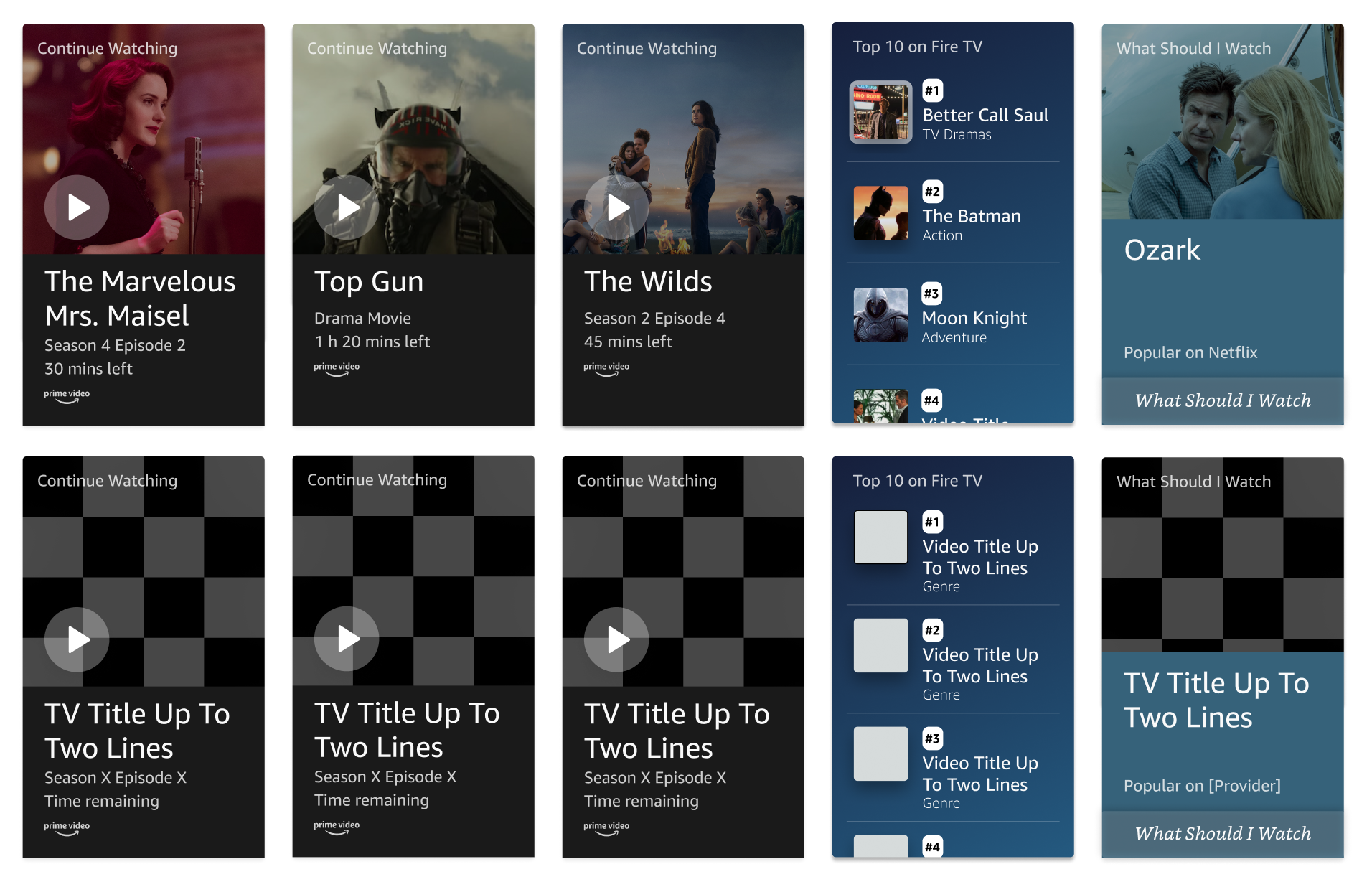
Why is Continue Watching the first card?
Customers seek recommendations and entertainment experiences that feel more personalized. Even though they understand the limitations of algorithms, they still want to feel like their entertainment platforms are theirs. Here are data and research findings how the Continue Watching MM home cards have been performing well.
Personalization with Continue Watching Video home cards exceeds expectations: Since launch on 11/18/21 Continue Watching (CW) home cards consistently have had amongst the highest conversion rate (~0.11%) amongst all Rotating Content Panel (RCP) providers in the US including: Video Merch (~0.014%), Recently Played Music (~ 0.071%), and Prime Photos (~ 0.036%). CW cards surpassed our OP2 conversion improvement estimate by 10x. The performance of CW home cards in UK since the launch on 12/6 has also been encouraging. From Wk 50 to Wk 52, impressions have increased by 52% and voice+touch engagement has increased by 58%. On 1/18, we launched CW in CA and are targeting to launch to remaining locales via day-parting by 3/25. Continue watching is the first Hands Off The Wheel (HOTW) campaign and confirms the value of personalization for video customers. In 2022 we've made investments to deliver additional HOTW video campaigns with the goal to further personalize the video experience. While this data reflects on multimodal, we can use this as signal for where to invest first on the FTV Recommends Widget.
Why customers like the current ‘Continue Watching’ experiences on multimodals. Participants were most likely engaged in continue watching the video content due to convenience and accuracy. One participant mentioned that it was useful that Alexa made a decision for him what to watch, he didn’t even realize that he wanted to continue watching the video content until he actually saw that card on his Echo Show.
Within Widget Remote Interactions
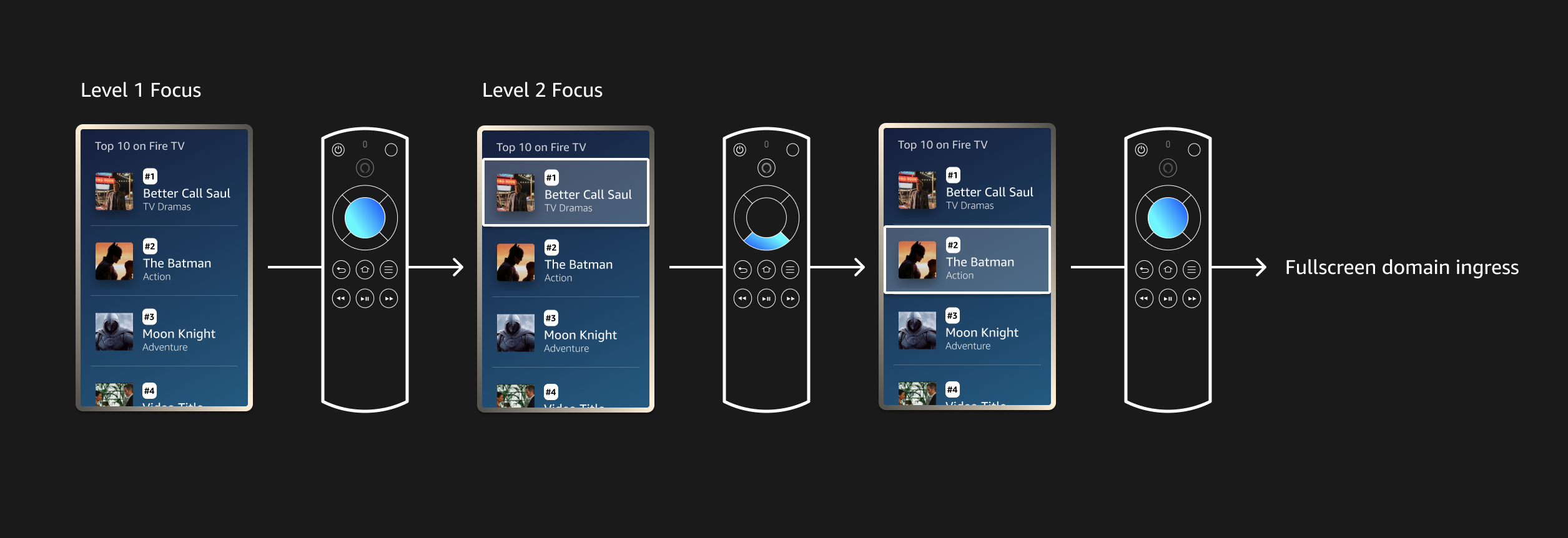
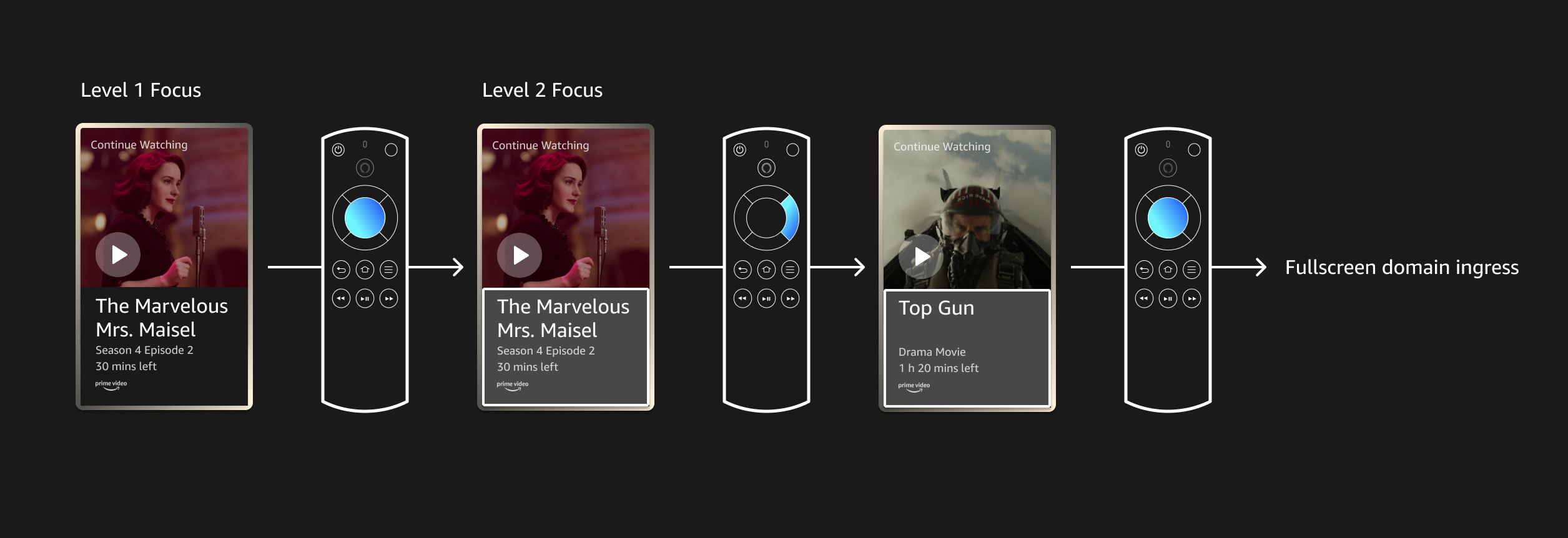
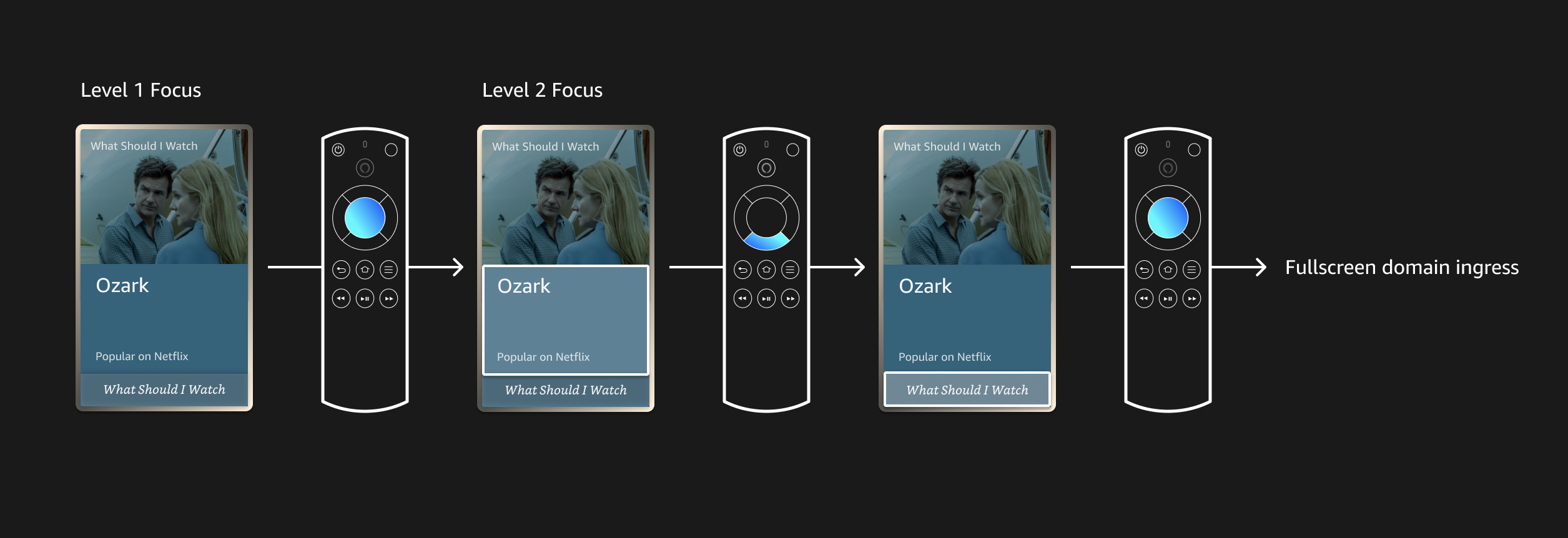
Time Cadence
We asked UserTesting participants how often they would like to find an updated Continue Watching card. 8/16 participants wanted multiple times a day. 5/16 participants wanted once per day. 3/16 participants wanted a few times a week. So 13/16 participants at least wanted the CW card to be updated daily.
New Design: Live TV Widget
This widget is a collection to show Recently Watched Live TV Channel(s) and the most popular Live TV Channel(s) up to 5 cards. The main customer experience outcomes are:
-
Find the new episode of [show x] that is airing right now. (Playing live)
-
Find the live event [x] streaming on [service] right now.
![]()
-
Recently Watched: A great example is Thursday Night Football, which will be ready for customers to watch from September 15th, 2022. If the customer has watched TNF more than two times this season and/or watched last year’s season, we proactively show the TNF live game while the game is airing now.
- Breaking News: A great example is YouTube TV local news channels, which feature comprehensive, up-to-date coverage on the latest top stories, sports, business, and more. Whether the customer would like to have a morning catch-up or a nighttime cooldown, there are live news channels available anytime.
- Live TV Shows: A great example is Saturday Night Live TV shows, which have a set schedule when they are airing live. If the customer watches this TV show more than two times, they will be able to find the next episode when it's happening now.
- Video on Demands: There will be programs that are recorded in advance, but you can tune in anytime. This content needs to be portrayed differently from what's airing live now to set the right expectation for customers.
Media Feedbacks
Amazon’s new Fire TV Omni gets QLED, ambient experience & moreA rival to Samsung's The Frame
Amazon’s Fire TV Omni QLED Series is a great smart home hub
Amazon Fire TV Omni QLED review: Amazon’s best screen yet
